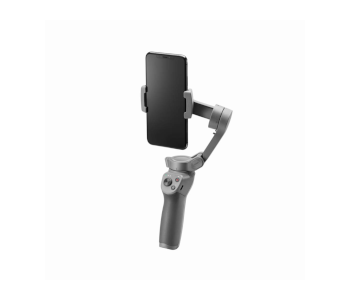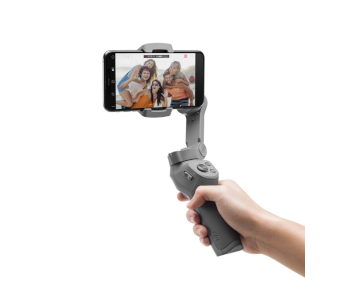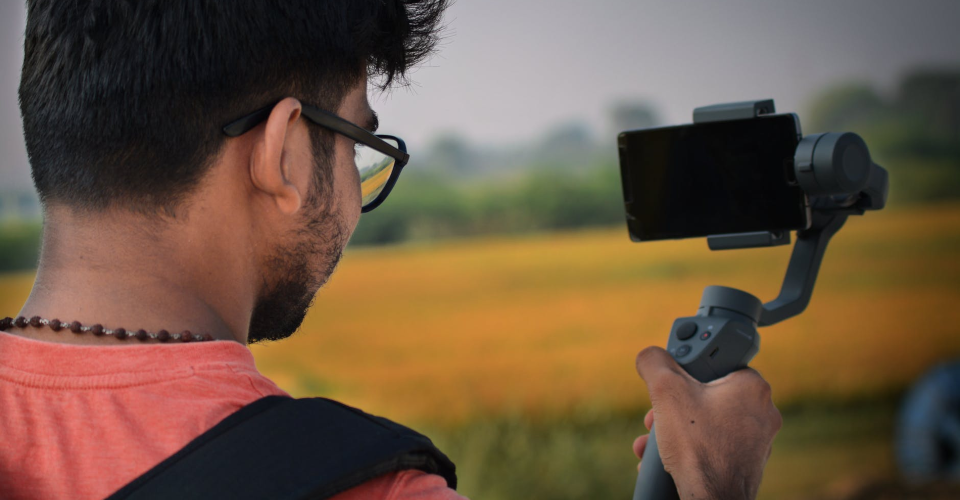The DJI Mobile Osmo 3: Is It Worth It?
It feels like you can’t go a day now without running into some amateur filmmaker or vlogger. You might even be one yourself, so you’ll understand how big the market for handheld gimbals has become. Gimbal technology, which used to be so expensive that only professional filmmakers could afford it, has now become so much more accessible even for amateurs.
Global tech leader DJI has managed to remain a relevant force in the handheld gimbal industry with their Ronin and Osmo product lines. Their latest release, the DJI Mobile Osmo 3, seems to offer an unprecedented level of portability. But does this reduction in size compromise the gimbal’s performance? Is it still a good buy in 2019?
At a glance

The Osmo Mobile series is DJI’s very own line of handheld gimbals meant to be used with smartphones for Steadicam-style amateur filmmaking. Since they don’t come with their own cameras, they are a very cheap way of enhancing your videos and vlogs with some mechanical stabilization. Now on its third iteration, the DJI Osmo Mobile 3 barely resembles the original. The massive improvements that have been made in just three generations speak well of DJI’s drive for innovation, and we are all for it.
Build and design
The Osmo Mobile 3 inherits the simple and minimalist design of the 2nd generation of the Osmo Mobile while introducing a host of new and innovative features. Like the previous generations, the body of the Osmo Mobile 3 is almost entirely made of plastic, which helps keep it light and affordable. The gray color scheme of the Osmo Mobile 3 may seem drab and boring, but everything else about his 3-axis gimbal is plenty exciting.
The handle of the Osmo Mobile has a rubber grip for extra comfort and traction and is tilted slightly forward. The forward angle feels much more natural and comfortable, as it places your phone farther from your face without having to extend your arm all the way. This design decision was something that we didn’t know we wanted but is a highly welcome modification.
The Osmo Mobile 3 is both shorter and smaller than any of its predecessors. When in use, this reduced form factor means that it’s much easier to move around using just one hand. If you typically end up having to hold the camera and gimbal up for a few hours at a time, the reduction in size and weight of the Osmo Mobile 3 can be a real blessing.
DJI has taken the portability of the Osmo Mobile 3 one (or several) levels higher by allowing the arms to fold inwards. When it’s time for the gimbal to be stowed, it can fold down to roughly 6 inches by 3 inches – small enough to fit into a jacket pocket. Poor portability was one of the biggest critiques of the previous Osmo Mobile generations, and we are glad to see DJI finally addressing it with the Osmo Mobile 3.
Device support
The Osmo Mobile 3 can accommodate phones with dimensions of up to 7.08 inches diagonally. This is more than enough for most smartphones, even supersized models such as the Samsung Galaxy Note 10. Instead of a tedious screw-on mount, the Osmo Mobile 3 opts for a tension tray – basically an upgraded version of the tension clamps you see in many selfie sticks. There was quite some thought that went into the design of the mounting tray, as it deliberately avoids pressing down into the side buttons of your phone.
One more thing we like about the new tension tray of the Osmo Mobile 3 is that it leaves both the phone’s charging port and the 3.5-mm port open. This means that you can either charge the phone while using it with the gimbal or attach accessories such as an external microphone. This is a welcome change for vloggers and filmmakers who could use the reduction in ambient-noise to produce more professional-grade output.
Battery
According to DJI, the Osmo Mobile 3 comes with the same battery as its predecessor. No complaints there, because the battery of the 2nd generation Osmo Mobile was excellent. You can expect up to 15 hours of continuous use on a single battery cycle of the Osmo Mobile 3. Charging of the battery is done via a USB-C port.
Charging the gimbal’s battery from empty to full takes around 2.5 hours with a 5V/2A power supply. The battery is not swappable.
A nice feature of the Osmo Mobile 3 is the full-sized USB port that allows you to charge your phone (or other devices) from the gimbal’s battery. The USB port only outputs around 1A of current, so it’s not going to charge your phone quickly. However, it’s still a great backup in case your phone’s battery goes low in the middle of a shoot. You can even charge an external device even when the Osmo Mobile 3 is turned off.
Ease of use

Every aspect of the Osmo Mobile 3 was designed for it to be used with just a single hand. This means that all critical functions are within reach of your fingers from the gimbal’s rubber-lined handle. The Osmo Mobile 3 features the return of the trigger button – something that was in the original Osmo Mobile but curiously disappeared in the 2nd generation.
Like other handheld gimbals, the Osmo Mobile 3 has an analog joystick that for easy horizontal and vertical rotation of the gimbal arms. The top button starts and stops video recording, while the M button quickly toggles between the photo and video modes.
The M button, conveniently located at the bottom right portion of the grip, will be one of the most used buttons in this gimbal. By double-tapping the M button, the gimbal will quickly switch between vertical and horizontal orientations – great for those who (unwisely) prefer recording videos vertically. Triple-tapping the M button automatically aligns the gimbal arms in preparation for stowing.
Naturally, the trigger button is even more useful. Aside from letting you take still shots quickly, double-tapping the trigger button re-centers the gimbal – useful for when your gimbal arms end up in some convoluted orientation. Triple-tapping the trigger button switches between the front and rear cameras of your phone. This last action can also be done through the DJI MIMO app, but using the trigger button is so much smoother (and looks cooler, too).
An analog slider at the left side of the grip zooms the camera in and out quickly. The Osmo Mobile 3 only supports digital zoom via this slider, which will result in some reduction in quality. Finally, some handy LED indicators at the front face of the grip show you just how much battery life the gimbal has left.
Performance
DJI has perfected their gimbal game from their wide range of camera drones, so anything less than perfect in the performance department would be a disappointment for the Osmo Mobile 3. We’re glad to report that these lofty expectations have been met. Videos recorded with the Osmo Mobile 3 are exceptionally smooth, and the gimbal is very successful in eliminating any wobbly or jerky motions. If your goal is to capture footage with professional-grade stability, then the Osmo Mobile 3 absolutely does not disappoint.
One more enhancement that we really appreciate with the Osmo Mobile 3 is the side-mounted design of the gimbal arm. What this does is that it gets the gimbal out of the field of view of wide-angle shots – something that has been a perennial problem with most of the other handheld gimbals.
Smart features
Through the DJI MIMO app, you can access a host of camera modes and smart features for the Osmo Mobile 3. There are the standard ones such as the Panorama shot, time-lapse, slow motion, and the Glamour Mode, which applies a debatably beauty-enhancing filter to your face. There’s also a Sport Mode which allows for faster panning of the gimbal to keep track of fast-moving subjects.
One of the more useful features of the Osmo Mobile 3 is Story Mode, which automatically builds a single video file from the clips and photos that you’ve taken. It can even add a soundtrack. This is great for vloggers who don’t have the time to edit their videos themselves – just active Story Mode, and you’ll have a video ready for uploading within a few minutes.
The Osmo Mobile 3 has inherited a couple of excellent smart features from the DJI drones. The Dolly Zoom mode, a disorienting cinematic effect made popular by the old Hitchcock movies and a signature feature of the Mavic 2 Zoom drone, has found its way to this handheld gimbal. The Osmo Mobile 3 also features Gesture Control, which allows you to control the camera by just waving around your hand.
However, we expect the standout feature of Osmo Mobile 3 to be the Active Track mode. This feature is already a staple in DJI drones and has already been added to the recently released Ronin-SC. There’s no difference in how effective and easy it is to use Active Track for the Osmo Mobile 3 – simply pick a subject on the screen using the DJI MIMO app, and the gimbal will pan and rotate as much as it can to keep the subject at the middle of the screen. This highly innovative feature should come in handy if you want to create dynamic and cinematic videos.
Price
The Osmo Mobile 3 was launched at a price of $119. To put this into perspective, the Osmo Mobile 2 was launched at a slightly higher price. If there was even a question on whether the Osmo Mobile 3 was worth it, then the reduction in price from the 2nd to the 3rd generation should be enough of an answer.
If you want to add a professional touch to your vlogs, then yes, the Osmo Mobile 3 is worth it. If you already shoot videos professionally, then the portability and lightweight design of the Osmo Mobile 3 might still appeal to you. Despite the price and the size of the Osmo Mobile 3, its performance can only be described in superlatives – this handheld gimbal is a true showcase of DJI’s expertise in gimbal technology.
The Osmo Mobile 3 can also be purchased in a combo set that includes a screw-on tripod, a carrying case, a soft pouch, and a wrist strap. The carrying case and pouch are the perfect complements to the portability of the Osmo Mobile 3, while we can imagine so many scenarios where a proper tripod can be really handy. We think that the wrist strap should have already been included with the basic Osmo Mobile 3 bundle, though.
For just $20 more, the Osmo Mobile 3 combo set isn’t a terrible buy. The protection that the carrying case provides alone is worth the additional cost.
Final thoughts
The Osmo Mobile 3 doesn’t look so exciting, but everything that lies under the hood has managed to impress us. At only slightly above $100, this is the ultimate handheld gimbal for those who are on a budget.
If you’re looking for a cheap product that can strap enhance the quality of your videos and vlogs, then this is the answer to your prayers. With its lightweight and foldable design, the Osmo Mobile 3 is the perfect accessory for when you want to capture handheld footage while traveling.

